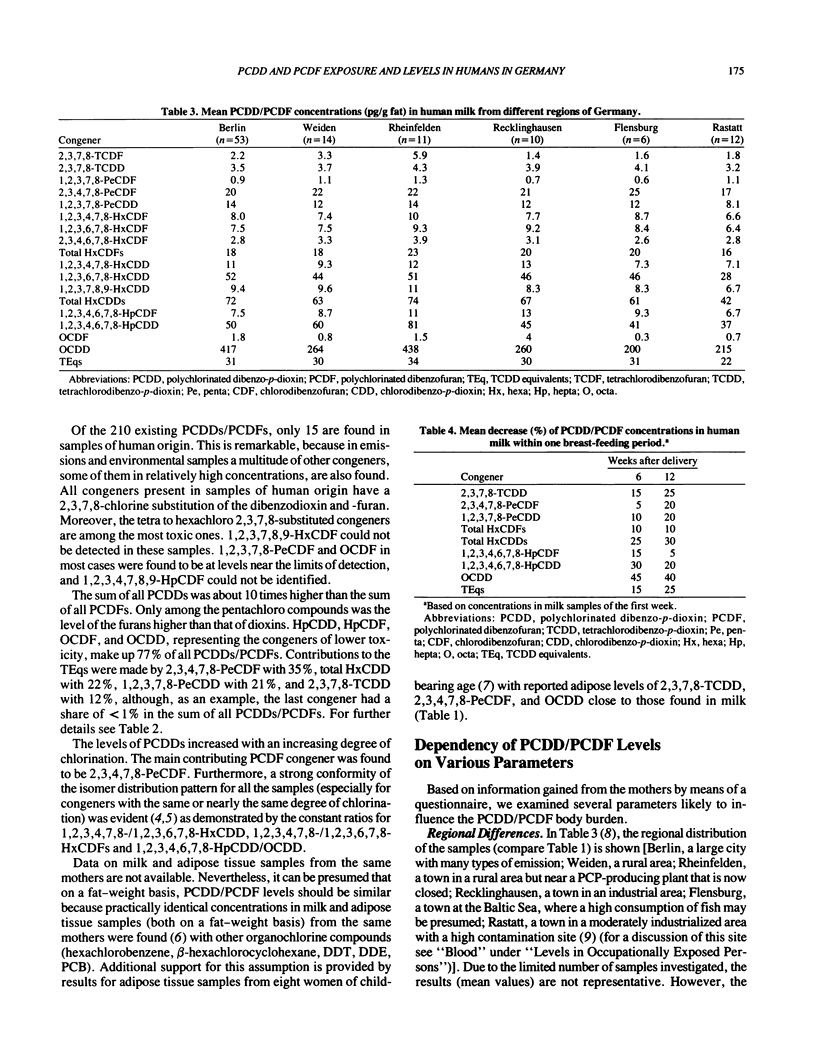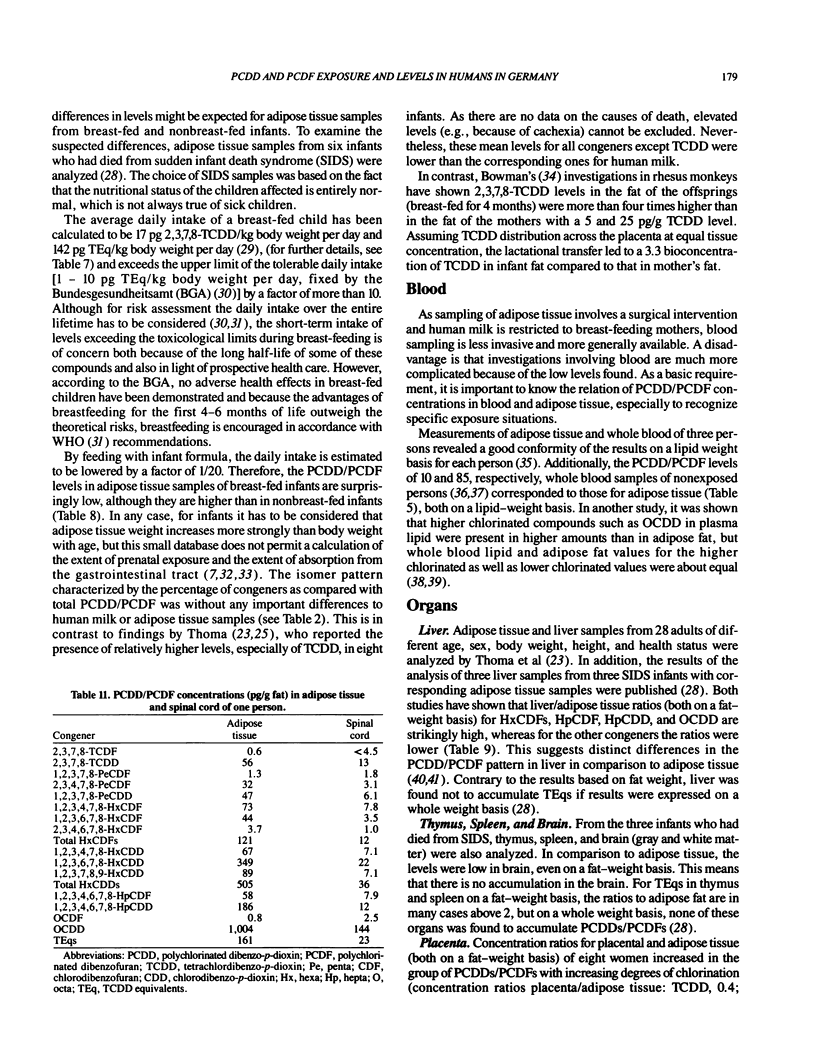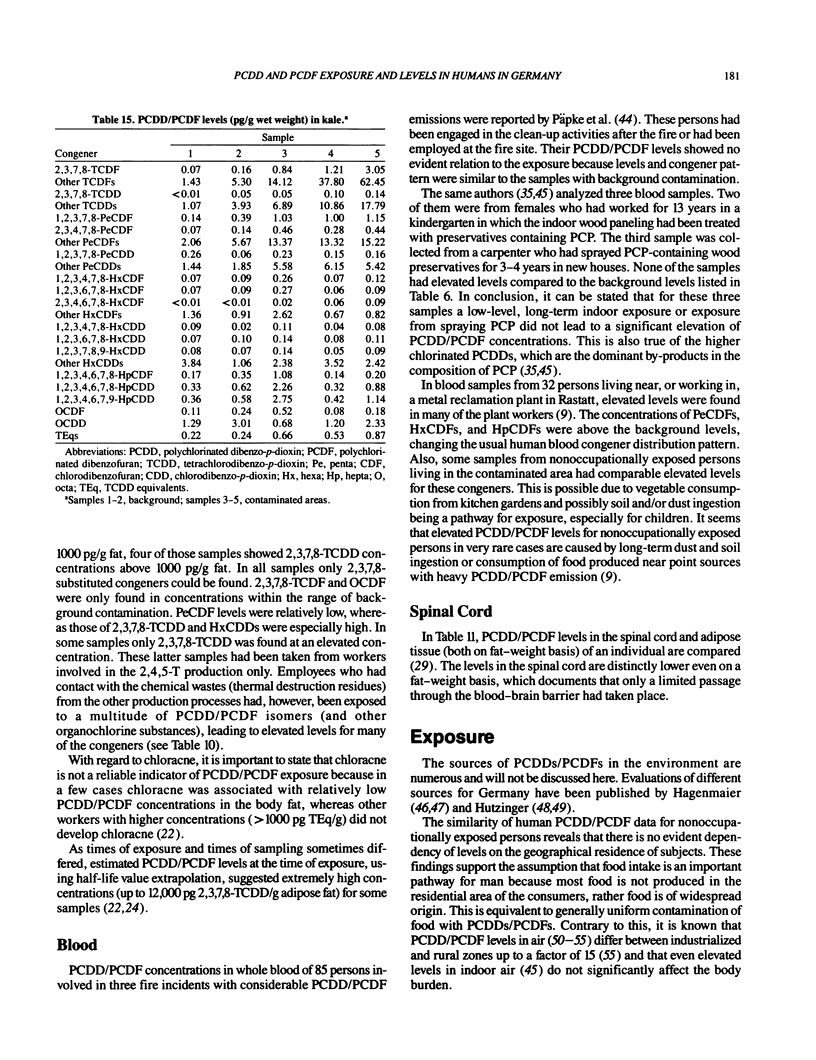Abstract
For nonoccupationally exposed persons, the daily intake via food consumption has been calculated to be 0.35 pg/kg body weight per day for 2,3,7,8-tetrachlorodibenzo-p-dioxin (TCDD) and 2.3 pg/kg body weight per day for TCDD equivalents (TEqs). As compared to food, other sources and pathways are of minor importance. Food of animal origin contributes most, although human exposure begins with atmospheric emissions depositing these compounds on plant surfaces. In the meantime, a possible additional body burden from cardboard containers for cow's milk and coffee filters has been practically excluded. Of the 210 existing PCDDs and PCDFs, only 15 2,3,7,8-substituted isomers with a characteristic congener pattern can be found in samples of human origin. In adipose tissue and milk samples, mean levels for 2,3,7,8-TCDD of 7.2 and 3.6 pg/g fat, respectively, and of 56 (range 18-122) and 30 (range 10-72) pg TEqs/g fat, respectively, were determined. Human data revealed a dependency of polychlorinated dibenzo-p-dioxins/polychlorinated dibenzofurans (PCDD/PCDF) levels on age. In human milk, levels became reduced with the number of children born to mothers and duration of breast-feeding period. The average daily intake for a breast-fed child has been calculated to be 17 pg 2,3,7,8-TCDD/kg body weight per day and 142 pg TEqs/kg body weight per day, respectively. Levels in adipose tissue of infants, even if breast fed, were distinctly lower compared to human milk. In human milk, adipose tissue, and whole blood, PCDD/PCDF concentrations have been found to be equal on a fat-weight basis. Liver fat accumulated PCDD/PCDF with an alteration in the congener distribution pattern, whereas brain, even on a fat-weight basis, showed the lowest concentrations. Elevated or even high levels were found in occupationally exposed persons working in special chemical plants or involved in specific processes. There are limited data suggesting slightly elevated PCDD/PCDF levels are due to long-term consumption of a large share of food produced near point sources with a heavy emission or ingestion of soil or dust from such areas.
Full text
PDF












Selected References
These references are in PubMed. This may not be the complete list of references from this article.
- Fürst P., Fürst C., Meemken H. A., Groebel W. Analysenverfahren zur Bestimmung von polychlorierten Dibenzodioxinen und Dibenzofuranen in Frauenmilch. Z Lebensm Unters Forsch. 1989 Oct;189(4):338–345. doi: 10.1007/BF01683211. [DOI] [PubMed] [Google Scholar]
- Lindström G. U., Sjöström M., Swanson S. E., Fürst P., Krüger C., Meemken H. A., Groebel W. Multivariate statistical approach to a data set of dioxin and furan contaminations in human milk. Bull Environ Contam Toxicol. 1988 May;40(5):641–646. doi: 10.1007/BF01697508. [DOI] [PubMed] [Google Scholar]


